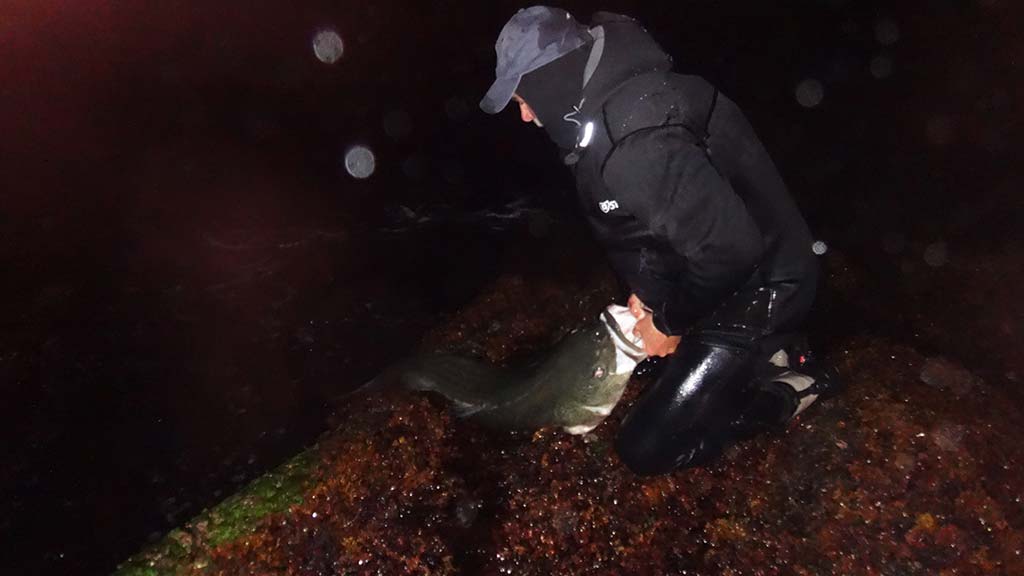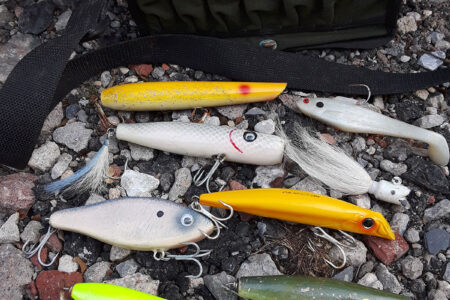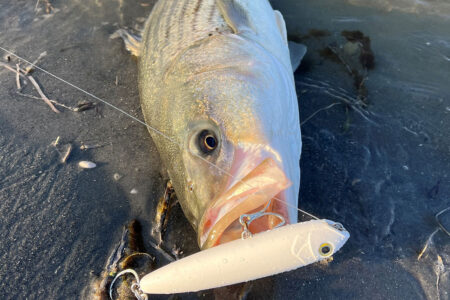
July is not a signal for surfcasters to let down their guards.
The excitement and anticipation of the spring run is long behind us now, we got what we got. In my estimation, it was a good spring but nothing like what I experienced 8 to 15 years ago… still, I’m happy with my results. The spring run is over, but the migration is not. The movements of striped bass are driven by many things, from their internal calendars, to spawning, from bait concentrations to water temperature. And, not unlike human beings, there is some measure of individual preference to be factored in. Why do some stripers stay at Montauk while others summer in the islands of southern Maine?
I began to suspect that there was a second movement to the spring migration many years ago when I noticed a trend with surf guys catching some big fish—40 pounds and up—in Rhode Island in early July. The evidence continued to mount when my friend spent a few days fishing the fall run in Montauk. He stopped in at Paulie’s and Paulie said to him, “If you want to catch big fish here, come back in July.” The big pushes of large stripers in the Canal on the July moons only served to nudge my curiosity further. Even the fact that the biggest wave of Block Island giants typically doesn’t’ arrive until July supports the second-push narrative.
So, are you with me? In my observation there is an undeniable second wave of stripers that arrives—almost simultaneously—in New England and along the eastern end of Long Island, some time between the last week of June and the second week of July. And while I have many questions about the origins of this wave, one thing I’m certain of, is that these fish average on the large size with some true unicorns in the mix.
I won’t seek to explain why this happens, but I can shed some light on where a percentage of these fish come from. The first wave of larger stripers comes in and heads into the early season big fish spots we all know well, Raritan Bay, Western Long Island Sound, Narragansett Bay and Buzzards Bay (including the Canal). These fish spend several weeks in these locations, taking advantage of the abundant bait in the area—typically bunker—but when the water temps climb past their comfort zone, they begin to move—deeper first and then, finally, back out to the ocean.
We know where the fish are and we know where they want to end up, the sensible surfcaster is going to set himself up somewhere in between. My personal belief is that this movement is driven by water temperature, so I tend to fish the oceanfront and I set myself up in areas where deep water is very close by. Deeper water is cooler and represents a safe haven for striped bass. In 95% of the surfcasting spots we fish, we’re betting on these fish to come up into much shallower water to feed—which striped bass of all sizes often do.
This second run is a fleeting thing, it doesn’t last long and the fish typically don’t stay—unless there’s a reason, like a ton of bait. What’s worse is you have to grind it out—night after night—and wait for success to come to you. Just like any other migration period, your best bet is to fish a land obstacle that the fish will be forced to navigate around.
If I had to fish just one thing for this short period of possibility it would be live eels. But in more recent years I have fallen in love with deep-running metal lips. Whatever I throw though, I try to make it big. And don’t neglect daylight fishing either, I remember one July a friend of mine took six 40-pounders from the rocks on topwater plugs, all right at sunset.
Looking at a map of the area in question, there are countless spots that beg for attention. Any river mouth, major point, space between islands, harbor outlet or passage into a large bay or backwater is fair game and likely to produce. July feels like the only full month of “fishing summer”, but if you’re a surfcaster eyeing your next PB, July is not a time to let down your guard.





